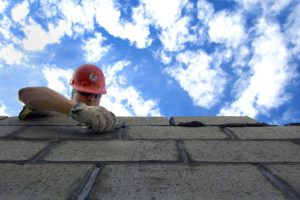
In an age where natural and man-made disasters seem to strike with increasing frequency and intensity, the concept of disaster resilience has emerged as a crucial consideration for communities, governments, and individuals alike. Disaster resilience refers to the ability of a system, community, or structure to anticipate, prepare for, respond to, and recover from adverse events. While disaster resilience encompasses various aspects, such as social, economic, and environmental factors, the role of construction in enhancing resilience cannot be overstated. The way we design, build, and maintain our infrastructure plays a pivotal role in determining the ability of a community to withstand and recover from disasters.
Understanding Disaster Resilience

Disasters, whether natural or human-induced, can cause widespread destruction and disruption, impacting not only the physical environment but also the social and economic fabric of a community. From earthquakes and floods to hurricanes and industrial accidents, the consequences of such events can be devastating. Disaster resilience is the capacity of a system to absorb shocks, adapt to changing circumstances, and maintain essential functions during and after a disaster.
The Role of Construction
Construction, as a key driver of urban development, holds a significant role in disaster resilience. The choices made during the planning, design, and construction phases of infrastructure projects have far-reaching implications for a community’s ability to withstand and recover from disasters. Here are some ways in which construction practices contribute to disaster resilience:
Building Codes and Standards: The foundation of disaster resilience lies in robust building codes and standards. These regulations establish minimum requirements for structural integrity, safety, and hazard mitigation. By enforcing stringent building codes, communities can ensure that new constructions are designed to withstand the forces of nature, such as earthquakes, hurricanes, and floods. Properly constructed buildings and infrastructure reduce the potential for structural failures and minimise casualties during disasters.
Incorporating Hazard Mitigation Measures: Effective construction practices involve assessing the specific hazards a region is prone to and incorporating mitigation measures into design and construction plans. For instance, constructing buildings on elevated platforms in flood-prone areas, reinforcing structures against seismic forces, and using fire-resistant materials in wildfire-prone regions can all contribute to reducing disaster risks.
Resilient Infrastructure: Beyond individual buildings, resilient infrastructure is crucial for disaster resilience. This includes roads, bridges, utilities, and communication networks. Infrastructure that is designed with redundancies, alternate routes, and backup power sources can ensure that essential services remain operational during and after a disaster. For instance, hospitals designed with disaster resilience in mind can continue to provide critical medical services even when faced with power outages or structural damage.
Preparedness and Response Facilities: Construction can also play a role in providing facilities dedicated to disaster preparedness and response. Emergency shelters, evacuation centres, and command centres equipped with communication systems can serve as hubs for coordinating response efforts and providing refuge for affected communities.
Community-Centric Design: In disaster resilience, it’s not just about the physical structures but also about how communities are designed and organised. Planning and construction should prioritise creating neighbourhoods that foster social cohesion, have access to green spaces, and incorporate mixed land uses. This design approach can enhance a community’s ability to support one another during times of crisis.
Retrofitting and Upgrading: Many existing structures may not meet modern resilience standards, especially in regions with older infrastructure. Retrofitting involves reinforcing or modifying buildings to make them more resistant to disasters. Upgrading infrastructure systems to modern standards can also significantly improve their performance during disasters.
Knowledge Transfer and Capacity Building: Effective disaster resilience relies on knowledge dissemination and capacity building among construction professionals, engineers, architects, and local communities. Training programs and educational initiatives can ensure that those involved in construction are equipped with the latest techniques and strategies for disaster-resilient designs.
Environmental Considerations: Sustainable construction practices also contribute to disaster resilience by protecting ecosystems and natural buffers that mitigate the impact of disasters. For example, preserving wetlands and mangroves can act as natural barriers against storm surges, reducing the vulnerability of coastal communities.
Challenges and Opportunities
While the role of construction in disaster resilience is undeniable, it brings forth a set of challenges that necessitate strategic solutions. Rapid urbanisation and limited funding often pose obstacles to implementing resilient construction practices. In this context, leveraging modern tools like construction estimating services can aid in overcoming financial barriers. Additionally, the lack of enforcement and public awareness further compound the difficulty of promoting disaster-resilient construction. However, these challenges also present unique opportunities for innovation and collaboration within the realm of construction estimation. By embracing technological advancements and fostering public-private partnerships, the construction industry can navigate these challenges and pave the way for a more resilient built environment.
All in all, the role of construction in disaster resilience cannot be ignored. The choices we make today in designing and constructing our built environment have a profound impact on our ability to weather the storms of tomorrow. By embracing robust building codes, hazard mitigation measures, resilient infrastructure, and community-centric design, we can create environments that are better prepared to withstand and recover from disasters. Through collaboration, innovation, and a commitment to ensuring the safety and well-being of our communities, construction can truly be a driving force behind disaster resilience.




